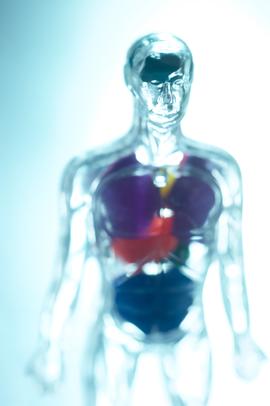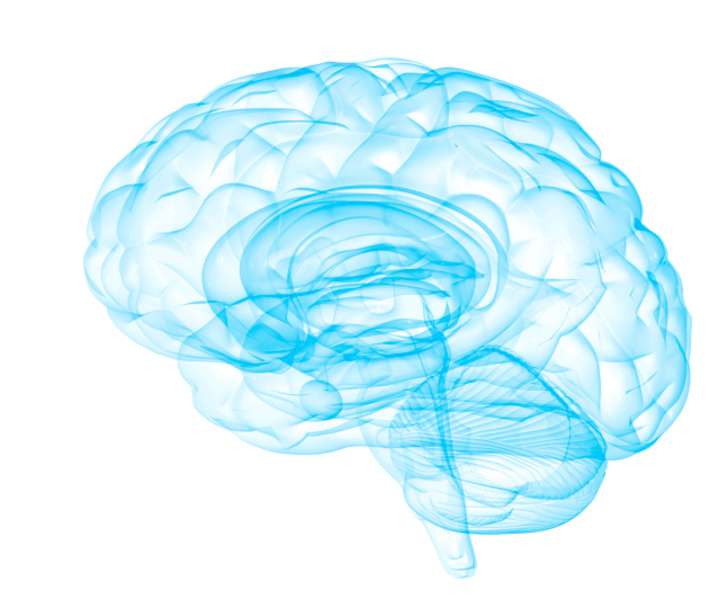Blog
- Does the Bacteria in Your Gut Impact Your Intelligence?
- By Jason von Stietz
- May 30, 2015
-

Photo Credit: Getty Images Does the bacteria in your gut impact your intelligence? A researcher at University College Cork found a distinct relationship between microbiome and the brain. Findings suggest that not only does one’s microbiome relate to stress response it also relates to learning. These findings were discussed in a recent article in BBC Future:
I have some startling news: you are not human. At least, by some counts. While you are indeed made up of billions of human cells working in remarkable concert, these are easily outnumbered by the bacterial cells that live on and in you – your microbiome. There are ten of them for every one of your own cells, and they add an extra two kilograms (4.4lbs) to your body.
Far from being freeloading passengers, many of these microbes actively help digest food and prevent infection. And now evidence is emerging that these tiny organisms may also have a profound impact on the brain too. They are a living augmentation of your body – and like any enhancement, this means they could, in principle, be upgraded. So, could you hack your microbiome to make yourself healthier, happier, and smarter too?
According to John Cryan, this isn’t as far-fetched as it sounds. As a professor of anatomy and neuroscience at University College Cork, he specialises in the relationship between the brain and the gut. One of his early experiments showed the diversity of bacteria living in the gut was greatly diminished in mice suffering from early life stress. This finding inspired him to investigate the connection between the microbiome and the brain.
The bacterial microbiota in the gut helps normal brain development, says Cryan. “If you don’t have microbiota you have major changes in brain structure and function, and then also in behaviour.” In a pioneering study, a Japanese research team showed that mice raised without any gut bacteria had an exaggerated physical response to stress, releasing more hormone than mice that had a full complement of bacteria. However, this effect could be reduced in bacteria-free mice by repopulating their gut with Bifidobacterium infantis, one of the major symbiotic bacteria found in the gut. Cryan’s team built on this finding, showing that this effect could be reproduced even in healthy mice. “We took healthy mice and fed them Lactobacillus [another common gut bacteria), and we showed that these animals had a reduced stress response and reduced anxiety-related behaviours.”
But why should bacteria in the gut affect the brain? There are several different ways that messages can be sent from one organ to the other. It can be hormones or immune cells via the bloodstream, or by impulses along the vagus nerve, which stretches from the brain to intertwine closely with the gut. Through these pathways, actions in one produce effects in the other.
So how might you go about altering your microbiome to do a spot of brain-hacking? Cryan’s team works on several fronts, investigating the potential to manage stress, pain, obesity and cognition through the gut. “We have unpublished data showing that probiotics can enhance learning in animal models,” he tells me. His team tested the effects of two strains of bacteria, finding that one improved cognition in mice. His team is now embarking on human trials, to see if healthy volunteers can have their cognitive abilities enhanced or modulated by tweaking the gut microbiome.
Another method of adjusting the bacterial profile of your gut is to undergo a transplant that involves taking faecal material from a donor’s intestine – often a close relative – and implanting into a recipient via enema infusion. This unorthodox treatment has been shown to successfully treat infections caused by pathogenic bacteria colonising the gut.
Brain boost
Thankfully, Cryan has a far more appetising method on offer. “Diet is perhaps the biggest factor in shaping the composition of the microbiome,” he says. A study by University College Cork researchers published in Nature in 2012 followed 200 elderly people over the course of two years, as they transitioned into different environments such as nursing homes. The researchers found that their subjects’ health – frailty, cognition, and immune system – all correlated with their microbiome. From bacterial population alone, researchers could tell if a patient was a long-stay patient in a nursing home, or short-stay, or living in the general community. These changes were a direct reflection of their diet in these different environments. “A diverse diet gives you a diverse microbiome that gives you a better health outcome,” says Cryan.
Beyond a healthy and varied diet, though, it still remains to be discovered whether certain food combinations could alter the microbiome to produce a cognitive boost. In fact, Cryan recommends that claims from probiotic supplements of brain-boosting ought to be taken with a pinch of salt for now. “Unless the studies have been done, one can assume they’re not going to have any effect on mental health,” he says. Still, he’s optimistic about the future. “The field right now is evolving very strongly and quickly. There’s a lot of important research to be done. It’s still early days.”
Hacking the brain often conjures up ideas of electrical hardware such as implants and trans-cranial stimulators. But it might be the case that a simple change in diet can shift your brain up a gear. The transhumanists and body hackers who believe that technology is the sole way to improve human ability would do well to pay as much attention to the living augmentation that already resides in their gut.
Read the full article Here
- Comments (0)
- Microsoft Reports Human Attention Span Shorter Than That of Goldfish
- By Jason von Stietz
- May 22, 2015
-

Photo Credit: Getty Images Is technology changing the way our brains function? According to a study by Microsoft, the average human attention span is now eight seconds. The average attention span of a goldfish is 9 seconds. The study was discussed in a recent article of MedicalXpress:
Microsoft has conducted a study aimed at learning how modern technology is impacting the attention span of people who use it. They have publishedtheir results on their own website, and claim also that they have used Sohlberg and Mateer's model of attention, which allows for providing a timed result. As part of their study, they note that there are three types of human attention: sustained (prolonged focus), selective (maintaining focus despite distractions) and alternating (shifting attention between tasks or stimuli). The study consisted of surveying 200 people and administering EEG scans to 112 volunteers.
The study was conducted in Canada and its main goal was to determine the impact of modern digital technology devices on attention spans as it relates to advertised material presented on various media.
The surveys consisted of asking questions and asking people to play games that have been designed to measure attention span while allowing for metrics to be taken. Respondent surveys that were returned were separated into three categories: high, medium and low attention span. The EEG scans were administered while volunteers watched different types of media and engaged in various activities—both to note when attention wandered from one subject to another.
In analyzing the data obtained, the researchers found that the average attention span for the respondents and volunteers was just eight seconds, down from twelve back in 2000, and one second shorter than the average goldfish. They also found that using digital devices has caused an improvement in multi-tasking skills.
They researchers also found that those volunteers who used their digital devices more than others, tended to have more trouble focusing in situations where it was required to function. They also noted that early adopters or users who have used digital devices quite heavily have learned over time to front-load their attention, allowing large amounts of information to flow in and to be processed, before switching their focus to something else, resulting in an increase in bursts of high attention. The researchers suggest this means they are better at determining what information they want to focus on and which to ignore.
On the other hand, the researchers also found that users that tend to use multiple screens (such as using their phones while watching TV on another screen) tend to have difficulty with filtering information that is coming at them on any of their devices. They suggest that overall our brains are adapting to the new technology as it develops and a shorter attention span may simply be a normal side effect.
Read the original article Here
- Comments (0)
- Post-Concussion Syndrome Symptoms Linked to Inflammation
- By Jason von Stietz
- May 15, 2015
-

Photo Credit: Getty Images Why do people who have had a very mild head injury, or no head injury at all, but an injury to another part of the body, sometimes display symptoms of post concussion-like syndromes? Researchers at McMAster University have linked these symptoms to inflammation rather than concussions. The finding was discussed in a recent article in MedicalXpress:
A team of researchers based at McMaster University has developed a new understanding of post-concussion syndrome, answering questions that have been plaguing researchers in the field.
Their study, published in the medical journalBrain, Behavior and Immunity, provides an explanation for why many people with even very trivial head injuries, or even injuries to other parts of their bodies, experience incapacitating post-concussion like syndromes.
These symptoms include headaches, dizziness, cognitive impairment and otherneuropsychiatric symptoms such as irritability, anxiety and insomnia.
"It's inflammation that they have in common," said Michel Rathbone, a professor of medicine for McMaster's Michael G. DeGroote School of Medicine and a lead author of the paper. "Rather than a concussion, we'd like to propose a unifying umbrella term of post-inflammatory brain syndromes or PIBS."
He added that the research will encourage scientists to open up new lines of research into understanding the cause of post-concussion symptoms in the absence of obviously visible brain injury on conventional imaging and into the treatment of these symptoms by targeting inflammatory mediators. For example, people who have a very subtle genetic change in a certain inflammatory protein have poorer recovery after brain injury.
It also explains why many social factors appear to play a role in development ofsymptoms: "We know that the immune system can be modulated, or sensitized by the current and even the previous environment an individual was in. These social factors, such as preexisting stressors, depression or anxiety, may actually be, in a way, biological factors."
Rathbone added that this will provide hope for individuals with cognitive dysfunction after major infections, surgeries and traumas, as it suggests that current and future treatments for concussion may hold a benefit for these individuals.
"This research opens many doors for so many different patients. We are excited to be starting a totally new approach to the field, and we look forward to making a difference for the patients of the future."
Read the original article Here
- Comments (0)
- How Anxiety is Processed in the Brain
- By Jason von Stietz
- May 8, 2015
-

Photo Credit: Getty Images How does the brain process anxiety? A recent study found that, when a person is anxious, the hippocampus passes the information not to the amygdala but to the prefrontal cortex. The study was discussed in a recent article in MedicalXpress:
Scientists from the Center for Brain Research at MedUni Vienna are investigating how anxiety is processed and the flow of information in the brain in general: In a study, which has now been published in the leading magazine Science, the team from the Department of Cognitive Neurobiology, led by Stephane Ciocchi and Thomas Klausberger, has managed to show how anxiety is coded by the neurons of the hippocampus and that this information is not then sent directly to the brain's fear center but rather to the prefrontal cortex, the brain's control center, for further processing and for decision-making.
Generally, the hippocampus, the switching point in the brain's limbic system "transmits" information about memory and emotions to many other regions of the brain. According to the researchers, this can happen in two different ways: "Either like a radio station broadcasting its program and each person taking the bit that interests them, or like the post with specific addressees for different bits of information," explains Klausberger, Head of the Department of Cognitive Neurobiology.
Using the "memory", "goal-oriented behavior" and "anxiety" functions, the MedUni Vienna scientists investigated the flow of information. They were able to show that, in the case of memory, the information flow is widespread, possibly because several regions of the brain are involved with memory. However, in the case of goal-oriented behavior or anxiety, the hippocampus sorts the information and, using different neurons, sends it very specifically to those specialized centers in the brain responsible for these functions.
Causes of anxiety and how it is processed
However, at the same time they also discovered that anxiety is coded by certain neurons in the hippocampus and preferentially forwarded to a region that has not previously been associated with this function. If a person is anxious, the hippocampus does not pass the information to the amygdala, where feelings of fear are normally processed but to the prefrontal cortex, where decisions are made. Klausberger: "For example, imagine you are setting off on a very high "skywalk" in the mountains and you are anxious and unsure whether to proceed. In order to see the view, your curiosity has to prevail and overcome your anxiety. The decision of whether to indulge your curiosity and step out or to stay where you are and keep safe is taken in the prefrontal cortex." Klausberger: "This answers a very basic question of neurobiology, namely how feelings of anxiety are manifested and processed in the brain."
It is important to make a clear distinction between anxiety and acute fear, for example if you suddenly encounter a rattlesnake or a shark in the wild, which is often accompanied by the "freeze" response.
The information flow in the neurons of the hippocampus was analyzed in an animal model by means of an optogenetic and electrophysiological research method that uses light stimuli.Read the original article Here
- Comments (0)


 Subscribe to our Feed via RSS
Subscribe to our Feed via RSS